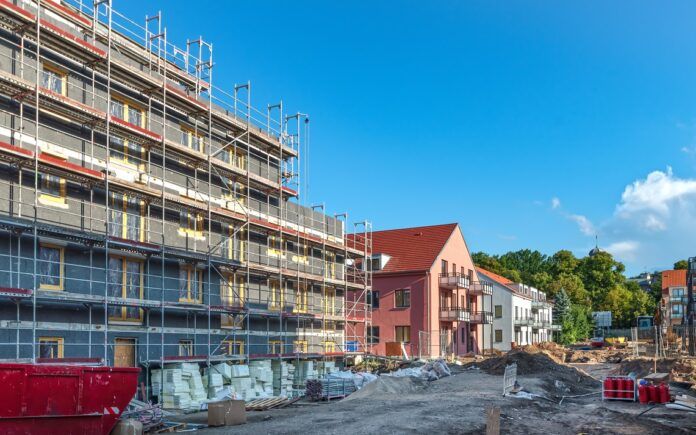Construction output is expected to fall by 6.8% in 2023, similar to the 7% contraction forecast three months ago, before a marginal fall of 0.3% in 2024.
The Construction Products Association’s (CPA) Autumn Forecasts revealed that this is a revision down from the 0.7% growth forecast in the Summer publication due to a weaker economic backdrop.
Now, while UK interest rates are likely to have reached a peak that is lower than previous expectations, it is now anticipated that they will remain at this level until 2025 due to stubborn inflation.
Consequently, the UK economy is expected to flatline throughout 2024, holding back the recovery in major sectors of construction activity such as new build housing and repair, maintenance and improvement (RMI) to 2025. Furthermore, in infrastructure, output is now expected to fall marginally as more roads projects appear likely to be pushed back or cancelled than anticipated only three months ago. Nevertheless, activity will remain near the current high levels due to work continuing on major projects already down on the ground.
Fall in demand for house builders
Meanwhile, the sharp increase in mortgage rates since the end of last year has led to house builders reporting a 30-40% fall in demand and it has remained weak throughout Summer and early Autumn. Interest rates and mortgage rates are expected to remain high for longer and adversely affect demand throughout next year. As a result, after a 19% fall in completions and output this year, completions are forecast to remain flat in 2024 with no growth until 2025.
Private RMI
Private housing RMI is the second-largest construction sector and activity continues to be on a general downward trend after the ‘race for space’ spike between 2020 and 2022, with output is forecast to fall 11% this year.
New build housing
As with new build housing, the weak economic backdrop in 2024 will limit the pace of recovery, with a weaker housing market reducing transactions-related improvements and a notable fall in new planning applications for larger improvements work. This will keep construction output flat in 2024, which is a downgrade from the 2% growth expected in the Summer Forecasts.
Infrastructure
Infrastructure activity remains strong down on the ground due to work continuing on major projects such as HS2 between Old Oak Common and Birmingham, the Thames Tideway Tunnel and Hinkley Point C.
However, following earlier announcements of delays to major road and rail schemes, it appears that more roads projects are being pushed back or cancelled than anticipated in the forecasts in Summer, whilst new projects continue to be delayed due to strong cost escalation and viability concerns. The impact of the government’s decision to cancel HS2 between Birmingham and Manchester is limited as the majority of this work was planned to occur beyond the forecast period. Similarly, the £36 billion of local and regional projects around the country announced by the Prime Minister are unlikely to start before 2029, at the earliest, if they occur at all.
Overall, infrastructure output is expected to fall by 0.5% in 2023, from its current high level, before remaining broadly flat (-0.1%) in 2024.
“A while before clouds begin to lift”
Commenting on the Autumn Forecasts, Rebecca Larkin, head of construction research at the CPA, said: “With only a couple of months left in a difficult year for construction and looking forward to 2024, the evidence suggests it will still be a while before the clouds begin to lift. Both new build housing and RMI have taken a significant hit from rising interest rates, falling real wages and weak economic growth.
“Although further rises in interest rates now appear off the table, the prospect of rising oil prices keeping inflation elevated suggests rates are likely to remain at peak for longer and throughout next year. This will keep demand subdued for house purchases and improvements. It will also create a step-change in financing costs compared to the record-low rates of the past decade for new commercial and industrial projects that is likely to limit appetite for investment and development.
“With infrastructure now set for two years of flatlining activity, it does shine a light on the importance of major projects as a driver of growth in the sector and for construction overall. In particular, government’s chopping and changing on infrastructure spending decisions this year has removed roads, rail and offshore wind projects from the near-term pipeline and has further weakened the industry’s confidence that government announcements can translate into tangible delivery.”




